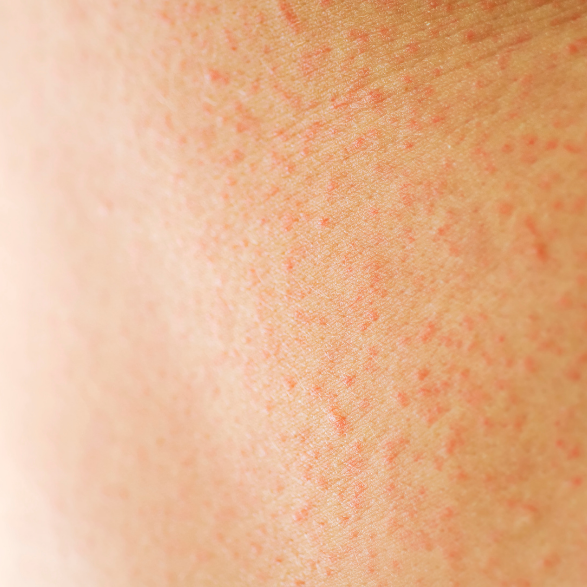
Everything You Need To Know About Contact Dermatitis
Published:
2 minute read
For those of us with sensitive skin, potential allergens and irritants are everywhere. If you’re prone to itchy, inflamed rashes, you’ve probably experienced contact dermatitis. While these kinds of reactions are usually temporary and easily treatable, flare-ups can be frustrating. There are two main types of contact dermatitis and figuring out which type you’re susceptible to is the first step in finding a solution. We’ve broken down the difference between allergic and irritant contact dermatitis, and how can you avoid/ treat them.

Irritant Contact Dermatitis
This kind of contact dermatitis is more common than allergic contact dermatitis, and the cause can be harder to identify. It occurs when the skin’s outer layers come in contact with a chemical substance, like acids, alkalis (drain cleaners), body fluids (urine and saliva), plants, hair dyes or nail polish remover. Unlike allergic contact dermatitis, this rash is usually more painful than itchy.
Allergic Contact Dermatitis
Allergic contact dermatitis is pretty straightforward — your body has an allergic reaction to an allergen. The allergen can be anything from poison ivy and other plants to jewelry metals, cosmetic products, fragrances, medications or preservatives. If you come in contact with an allergen, your body’s immune system responds by recruiting white blood cells. These white blood cells trigger inflammation — hence the itchy rash, which can form immediately or several days after exposure.

Diagnosing Contact Dermatitis
Whether it’s allergic or irritant contact dermatitis, signs of a skin rash include redness, swelling, blistering or oozing, burning or stinging, scaling, itching and pain. Getting a clinical examination can help identify what triggered the reaction, which is the only way to avoid future rashes. If you have a clue what the offending agent could be, avoid the substance to see if the rash improves. If you’re experiencing allergic contact dermatitis, your physician can also perform test patches to figure out what the underlying cause could be. If it’s more likely irritant contact dermatitis, a doctor can usually determine the cause based on the irritants and chemicals you’re regularly exposed to.
Treating Contact Dermatitis
The only full-proof way to steer clear of contact dermatitis is identifying and avoiding the trigger. As far as treatment goes, most cases of contact dermatitis can be significantly improved with a hydrocortisone cream.
We call hydrocortisone cream the dermatologist dream cream because it can treat a seemingly infinite number of skin conditions. Medical hydrocortisone is a synthetic version of the hormone your body naturally produces to regulate your body’s inflammation. As immune cells are deployed to attack irritating stimuli, your body may experience itching, burning, redness, irritation, or swelling. Your adrenal glands begin producing hydrocortisone to combat this inflammation. Medical hydrocortisone can come in many different forms, but hydrocortisone cream is one of the most popular because it’s effective and can be used on any skin type.
For cases of contact dermatitis, hydrocortisone cream can ease inflammation and itching, dramatically improving the most annoying symptoms of the rash. However, you should check to make sure your hydrocortisone cream doesn’t contain ingredients that could exacerbate your dermatitis. Use as directed, and talk to your dermatologist if your symptoms last for more than ten days or so.
If you have sensitive skin, rashes might seem like an unavoidable part of your daily life. However, taking the time to investigate the source of your contact dermatitis could help you permanently avoid it! And for those random flare-ups, keep a hydrocortisone cream in your medicine cabinet at all times :)





